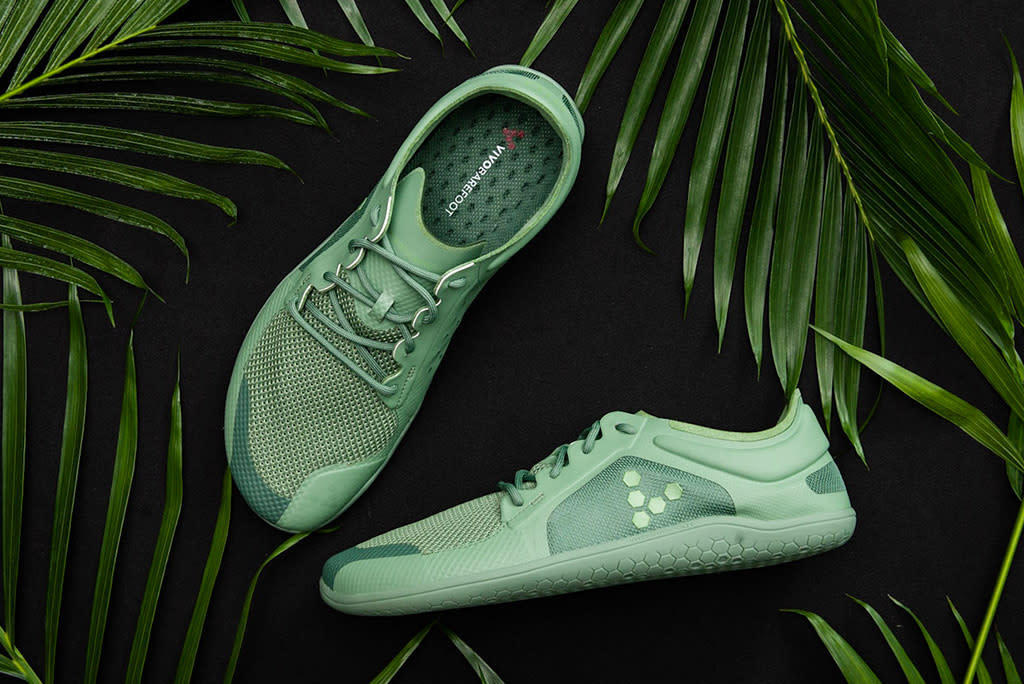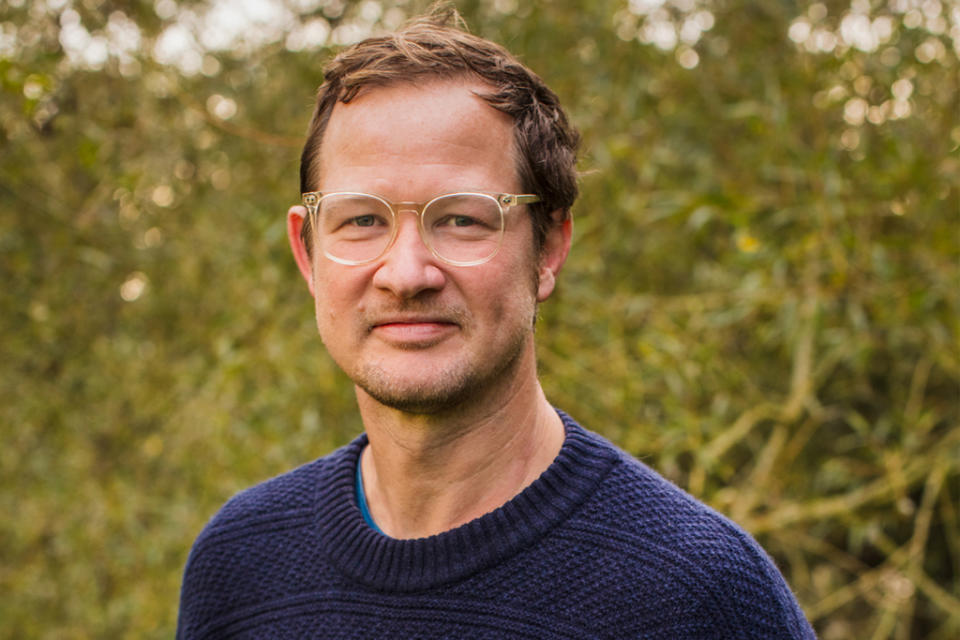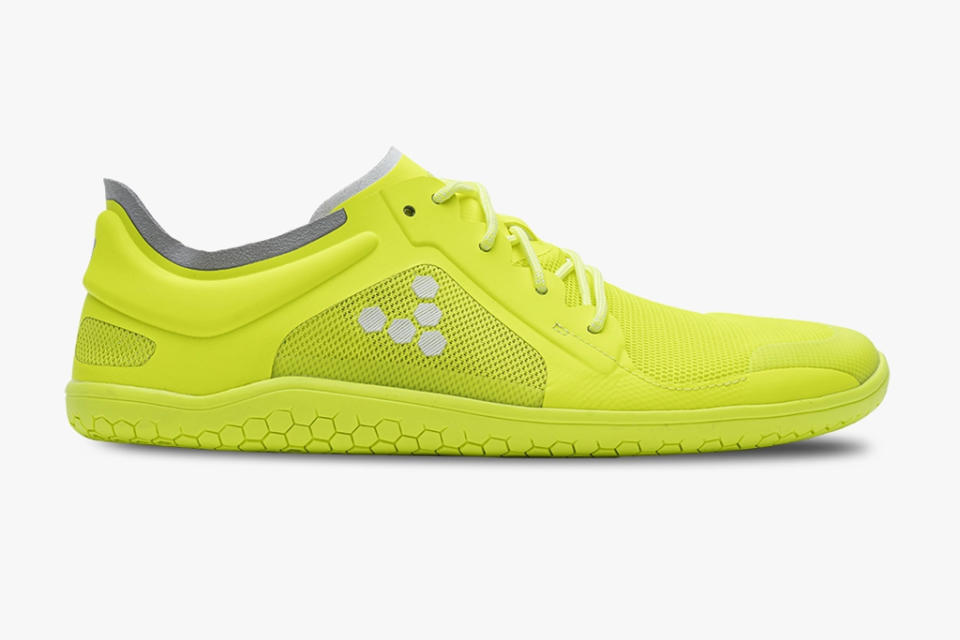Vivobarefoot Is Serious About Circularity and Scoring Its Environmental Impact

Vivobarefoot continues to push for a more sustainable shoemaking process.
This week, the U.K.-based footwear brand announced a new partnership with textile-to-textile recycling company Circ to kickstart cross-industry collaboration in order to develop more circular design solutions.
More from Footwear News
The two B Corp companies said they will work together to design and develop footwear uppers made entirely of a single material (polyester) that can be chemically recycled and reused in the production of new footwear without the need to add any virgin materials. Their end goal is to achieve a shoe that is truly “recyclable.”
Their joint creation — already dubbed the Vivobarefoot Primus Circular — is slated to launch in fall 2024.
“Our north star goal at Vivobarefoot is to develop performance footwear that is both durable and fully recyclable — and for us that means being able to use our recycled materials to make new footwear, rather than downcycling them,” said Charlotte Pumford, Vivobarefoot’s head of regeneration.
The companies noted that the current method used by many brands to recycle footwear involves a mechanical process of shredding and grinding the materials for reuse. But those materials are often turned into new products that cannot be recycled in the future, eventually ending up in a landfill.
By contrast, Circ says its process reduces cotton and polyester textiles to their fundamental molecules, which can be rebuilt into high-quality lyocell and polyester multiple times, and which are competitive with virgin materials.
Up to this point, Circ has focused primarily on apparel textiles, but is embracing a new challenge in footwear. “Shoes are a complicated and challenging problem for recyclers that, to solve, necessitates incorporating circularity into the design from the start. Transforming shoes will take time and effort,” said Circ chief business officer Luke Henning. “When we met the team at Vivobarefoot, we immediately knew we had found a like-minded and committed team who lived sustainability and circularity. Their passion for the planet mirrors ours, making them a natural fit.”
Galahad Clark, co-founder of Vivobarefoot, has been in the sustainability game for roughly 20 years, going back to the early aughts, when he started another eco-minded footwear brand, Terra Plana.
At Vivobarefoot, which launched in 2012, he has taken a holistic view of responsible shoemaking, grounding the brand in the principles of natural, barefoot movement and making minimalist footwear with better materials and processes.

“The definition [of sustainability] we really like is from a guy called John Ehrenfeld, who said it is about all life on Earth being able to flourish,” Clark told FN last month during a visit to the States. “Products should help us connect more with nature and or they should help us feel more human, improve human health and ask important environmental and ethical questions.”
But he said at least two of those goals — connecting with nature and improving health — are ignored in most studies of environmental impact. Which is why Vivobarefoot created its own lifecycle analysis (LCA) blueprint to more fully understand and communicate its impact.
Its V-Matrix scoring system was developed with its impact analysis partner, Made2Flow, and goes beyond many of the typical LCAs by also examining a product’s durability, complexity and repairability. It draws from primary and secondary data, as well as its own performance indicators, to assign each shoe an overall sustainability score (the higher the score, the less harmful the product).
The Primus Lite III will be the first Vivobarefoot shoe to be scored by the V-Matrix and will be followed by the Primus Trail, Primus Lite Knit, Tracker II and Tracker Forest through the end of this year.

When it comes to understanding environmental impact, Clark compared it to the rigorous transparency in the financial markets.
“The world has fought long and hard to create accounting standards, so you can compare different companies and financial performances,” he said. “When it comes to impact reporting, everybody’s really just marking their own homework and grading it as they see fit. In a perfect world, we’d be able to do all of our reporting by an agreed method, so our apples look like other people’s apples. But we’re comparing apples with oranges and grapes and who knows what else.”
He noted that since starting to work with Made2Flow, Vivobarefoot has already uncovered surprising results. For instance, he said they discovered that many of the no-sew technologies used to construct shoes are even worse for the environment than expected.
As for what it will take for manufacturers to align under one model, he predicted that government action will be needed, starting with the European Union’s proposed new legislation. Those regulations are set to start in 2025, though details are still limited, said Clark. “Companies right now are having to take a guess which aspects of which [environmental] frameworks they think [the EU] is going to actually enforce. So the good companies are saying — which everyone should really do anyway — let’s basically use them all.”
Best of Footwear News
Sign up for FN's Newsletter. For the latest news, follow us on Facebook, Twitter, and Instagram.

